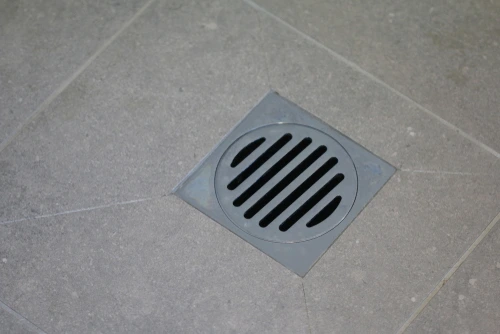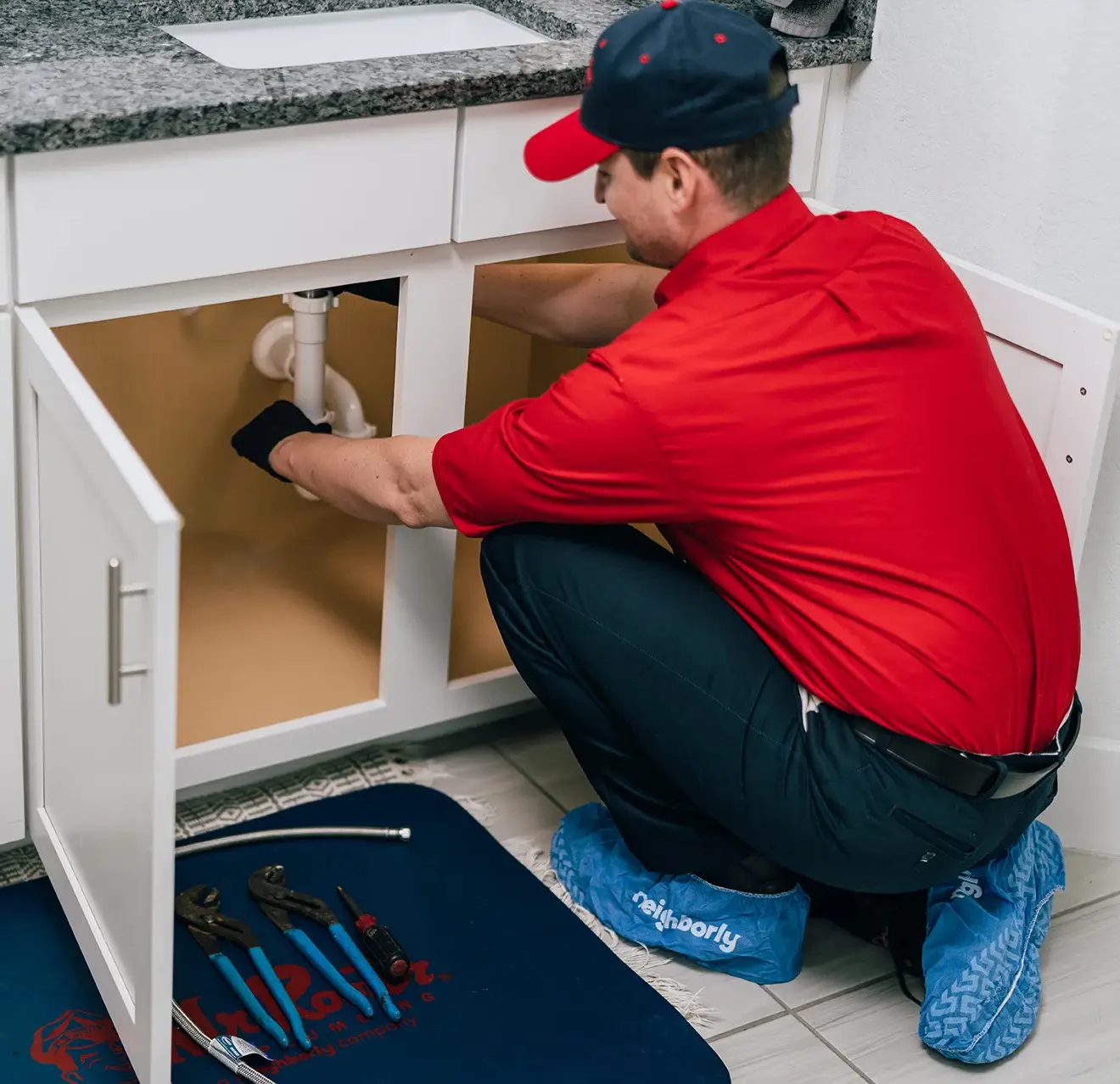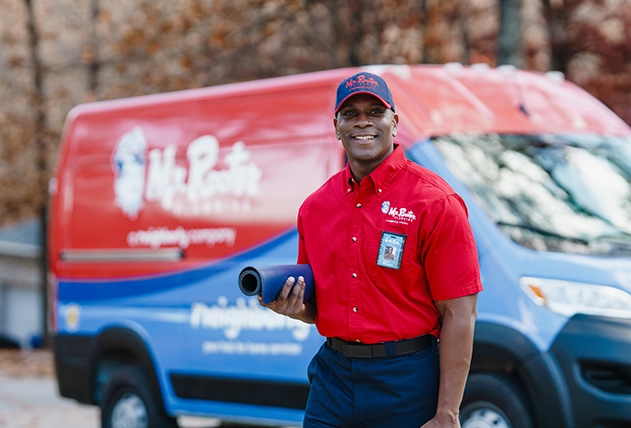
Mr. Rooter® Plumbing experts explain how regular floor drain maintenance helps prevent backups and costly water damage. Learn more about professional sewer and drain services. Here’s how to maintain a floor drain (5-step checklist):
|
Most homeowners don’t think about their drains until they begin to stink or back up into the sink or tub. But with a few simple floor drain maintenance habits, you can stop odors, clogs, and backups before they start.
This guide by our plumbing professionals explains the importance of regular floor drain maintenance and provides expert advice on how to keep your floor drain clean, clear, and clog-free all year long.
Article contents:
- What Floor Drains Do (and Why Maintenance Matters)
- How to Maintain a Floor Drain (and Avoid DIY Mistakes)
- Signs You Need Professional Floor Drain Cleaning
- Call Mr. Rooter Plumbing for Floor Drain Maintenance and Floor Drain Repair
What Floor Drains Do (and Why Maintenance Matters)

|
A floor drain helps protect your home from water damage and odors by carrying excess water away and sealing out sewer gas with a small water barrier called a P-trap. |
A floor drain’s job is simple: move unwanted water out of your home before it becomes a problem. You’ll find them in basements, laundry rooms, and utility spaces, quietly preventing moisture damage and musty smells.
Each drain includes a curved piece of pipe called a P-trap. That small bend holds a few inches of water known as the trap seal, which blocks sewer gas from entering your home. When that water evaporates—or when debris keeps the water from refilling—the seal breaks and odors can creep in.
Quick tips:
- Pour a few gallons of clean water into rarely used drains once a month to keep the trap filled.
- If odors, bubbling, or slow draining return, schedule professional floor drain cleaning before the issue travels deeper into your plumbing.
Keeping the trap seal healthy is the foundation of effective floor drain maintenance. Next, we’ll look at simple habits that protect your drains from clogs—and how to handle upkeep safely.
How to Maintain a Floor Drain (and Avoid DIY Mistakes)

|
A little floor drain maintenance goes a long way. With a few simple habits—and no harsh chemicals—you can keep water flowing, odors away, and clogs from turning into bigger problems. |
Once you understand how your floor drain works, taking care of it is relatively simple. You don’t need special tools or products—just a few good habits that keep things running smoothly. Think of it as the five-minute favor your plumbing will thank you for later.
Basic floor drain cleaning steps
These small habits are the backbone of good floor drain maintenance—quick, safe, and easy to keep up with.
- Keep the cover on. That small grate stops hair, lint, and grit before they reach your pipes.
- Wipe and sweep. A fast cleanup around the drain keeps soap, dust, and dirt from washing inside.
- Top off with water. Once a month, pour a few gallons of clean water into drains you don’t use often to protect the trap seal.
- Skip the chemicals. Drain cleaners might seem like the easy solution, but they can corrode pipes and cause more damage over time.
- If it’s slow, call a pro. If you notice gurgling or water pooling around the drain, a professional floor drain cleaning service can help.
How to keep a basement floor drain from drying out
Basement and garage drains don’t see much action, which makes them easy to forget about. But when a floor drain goes unused, the water inside its P-trap can slowly evaporate, allowing sewer gas and musty odors to leak into your home.
Here are some simple ways to keep those rarely used drains healthy:
- Refill the trap seal. Pour a few gallons of clean water down the drain once a month to replace what’s evaporated.
- Add a small drop of mineral oil. A tablespoon helps slow evaporation, keeping the trap wet longer between uses.
- Inspect the cover and the nearby area. Sweep away dust or debris (including tile and grout dust) that might block water flow into the drain.
- Ask about trap primers or barrier devices. Trap primers are small plumbing features that automatically keep water in the trap and are especially useful in basements or mechanical rooms.
If you still notice musty smells or gurgling even after refilling the trap, it’s best to have a professional plumber take a look. They can confirm whether the trap is leaking, blocked, or needs a more permanent solution, such as basement floor drain or sewer line drain cleaning.
What not to do when cleaning a floor drain
It’s tempting to grab whatever’s under the sink when a floor drain slows down. But certain “quick fixes” can actually make the problem worse.
Watch out for these common mistakes to avoid when cleaning a floor drain:
- Using chemical drain cleaners. Many store-bought products contain acids or caustics that can corrode older pipes, harm seals, or create heat and fumes.
- Over-plunging or forcing pressure. Too much force can loosen pipe joints or push clogs deeper into the line.
- Mixing homemade remedies. Baking soda, vinegar, and hot water might deodorize temporarily, but they won’t clear a true clog—and frequent use can erode some pipe materials.
- Taking apart the trap. Removing parts of the P-trap without the right tools or experience can cause leaks and cross-thread fittings.
- Ignoring recurring symptoms. If water backups, gurgling sounds, or nasty odors return after a quick clean, that’s a sign you need professional floor drain cleaning.
When in doubt, let a professional handle it. Qualified plumbers can inspect for deeper issues you can’t see and use specialized tools to clear clogs safely.
Signs You Need Professional Floor Drain Cleaning
|
When a floor drain slows down, smells bad, or bubbles after use, it’s usually a sign that buildup is blocking water flow. Professional floor drain cleaning clears debris safely before it becomes a bigger problem. |
Most homeowners can handle light floor drain maintenance on their own, but when issues keep coming back, it’s usually a sign that something deeper is going on. But don’t panic—calling a professional doesn’t have to mean an expensive repair. In many cases, a simple cleaning or inspection solves the problem before it grows into a plumbing emergency.
The key is catching those early warning signs before they turn into clogs or backups. Here are the indicators to watch for—and what they usually mean.
Signs it's time to bring in a pro:
- Odors return quickly after cleaning. Persistent smells often mean buildup or bacteria deeper in the line. Learn more in our expert guide to cleaning a smelly drain.
- Water still drains slowly. If water still lingers after you’ve tried basic upkeep, a professional will need to inspect the pipe for hidden blockages or scaling.
- You hear bubbling or gurgling. These sounds usually point to venting issues or partial clogs—both require professional tools to fix.
- Water backs up into the room. Backflow during laundry or heavy rain can indicate a blockage in your main drain line.
- You’re cleaning the same drain repeatedly. Frequent problems signal a larger issue that can’t be fixed with surface-level cleaning.
Professional plumbers don’t just clear the clog—they check your system to make sure it’s protected from future problems.
At Mr. Rooter Plumbing, our highly trained experts use safe, proven methods for floor drain cleaning, camera inspections, and full-system maintenance so that you can get back to a clean, worry-free home.
Learn more about our sewer and drain services or schedule a professional inspection today.
Call Mr. Rooter Plumbing for Floor Drain Maintenance and Floor Drain Repair

When it comes to floor drain maintenance, some jobs are best left to the pros. Whether you’re dealing with a slow drain, a musty smell, or just want peace of mind, Mr. Rooter Plumbing is here to help.
Our professional plumbers use proven, non-invasive methods for floor drain cleaning, drain repair, and basement floor drain service—all backed by the Neighborly Done Right Promise®. That means every job is done the right way, the first time, according to our high standards of quality and care.
At Mr. Rooter, we treat every plumbing issue like it’s our own. We arrive on time, explain the problem clearly, and fix it fast. It’s that extra attention to detail that’s earned the trust of homeowners across the U.S.
Don’t wait for a clog to turn into a cleanup. Request an estimate today and keep your drains clean and clear.
This article is intended for general informational purposes only and may not be applicable to every situation. You are responsible for determining the proper course of action for your home and property. Mr. Rooter Plumbing is not responsible for any damages that occur as a result of this blog content or your actions. For the most accurate guidance, contact your local Mr. Rooter Plumbing location for a comprehensive, on-site assessment.

